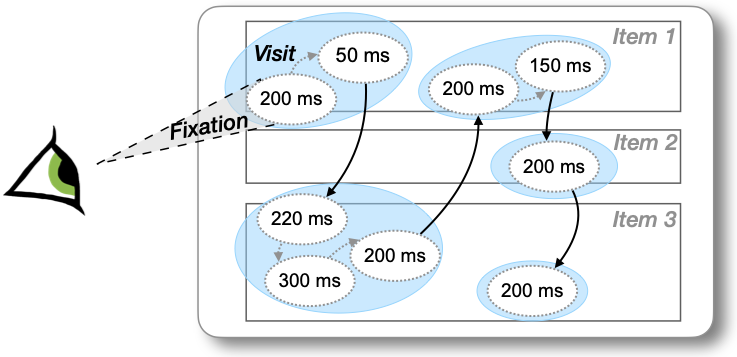
Users often browse the web in an exploratory way, inspecting what they find interesting without a specific goal. However, the temporal dynamics of visual attention during such sessions, emerging when users gaze from one item to another, are not well understood. In this paper, we examine how people distribute visual attention among content items when browsing news. Distribution of visual attention is studied in a controlled experiment, wherein eye-tracking data and web logs are collected for 18 participants exploring newsfeeds in a single- and multi-column layout. Behavior is modeled using Weibull analysis of item (article) visit times, which describes these visits via quantities like durations and frequencies of switching focused item. Bayesian inference is used to quantify uncertainty. The results suggest that visual attention in browsing is fragmented, and affected by the number, properties and composition of the items visible on the viewport. We connect these findings to previous work explaining information-seeking behavior through cost-benefit judgments.
Please contact the corresponding author for any questions:
Aini Putkonen
Email:
aini.putkonen (at) aalto.fi
Acknowledgements: This project received support from the Finnish Center for Artificial Intelligence (FCAI), the Academy of Finland (projects Human Automata – ID: 328813 and BAD – ID: 318559), as well as Technology Industries of Finland (project SOWP). Many thanks to the reviewers and our colleagues for providing feedback.